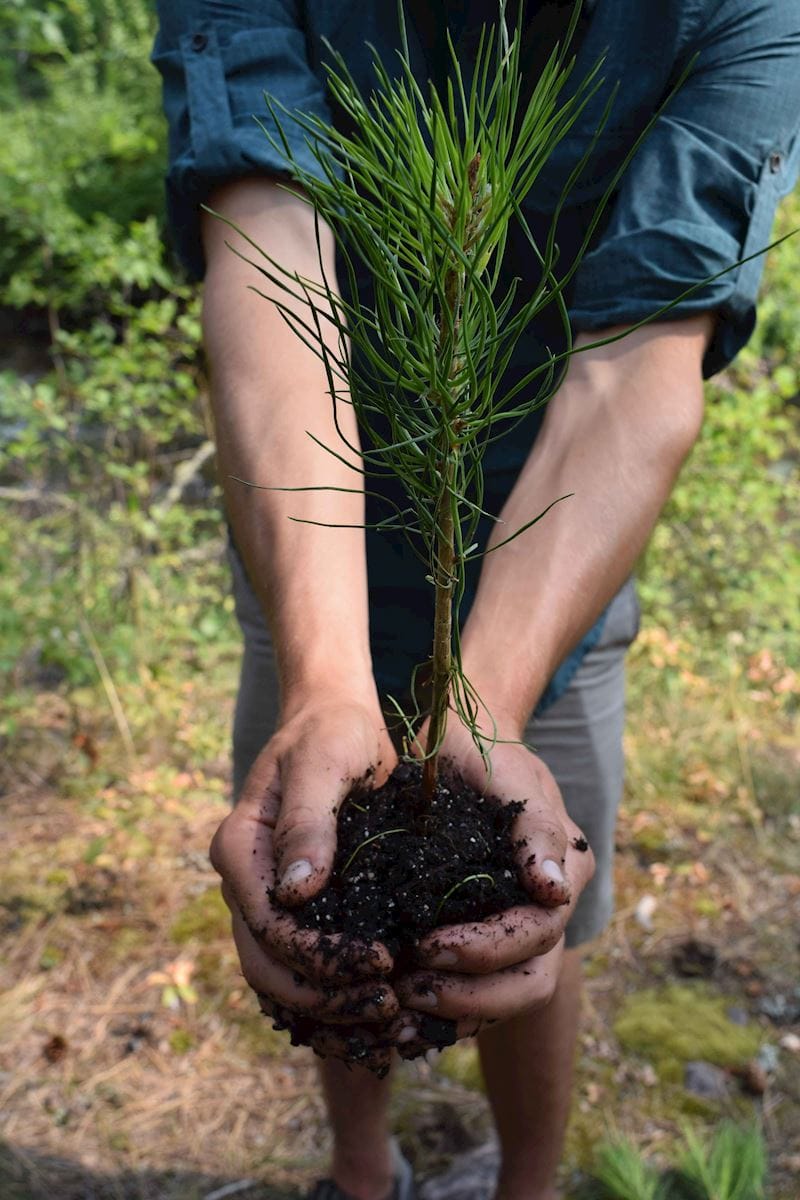Published by Kirby Winn on Wednesday, April 20, 2022 in Blog
 ImpactLife is proud to be among the first blood centers in the U.S. to partner with the National Forest Foundation. We invited Abby Schembra, Reforestation Partnerships Associate with the National Forest Foundation, to tell us about NFF, its reforestation efforts, and partnership with ImpactLife.
ImpactLife is proud to be among the first blood centers in the U.S. to partner with the National Forest Foundation. We invited Abby Schembra, Reforestation Partnerships Associate with the National Forest Foundation, to tell us about NFF, its reforestation efforts, and partnership with ImpactLife.
What has it been like to work with ImpactLife?
The National Forest Foundation is excited to be partnering with ImpactLife to plant trees on a National Forest in need of reforestation! This partnership is unique because of the impact you can make in the communities around you AND on national forests.
Seven in ten Americans live within a two-hour drive of a National Forest. These public lands offer unparalleled access while providing countless environmental benefits to all, like storing millions of metric tons of carbon each year to help mitigate climate change or generating fresh water to supply drinking water to 123 million Americans. The list goes on!
What does it mean to be involved in reforestation?
To be involved in reforestation at the NFF means together, we will restore tens of thousands of acres of habitat and protect watersheds that provide life’s most sustaining resource for thousands of communities and some of our largest cities. In 2018, the NFF set out with a goal to plant 50 million trees in the next five years. By planting 50 million trees on our National Forests, we are investing in healthy forests for today and for future generations.
How do our National Forests benefit from reforestation?
- Wildlife Habitat
- Air Quality
- Climate Mitigation
- Seed source for the future
- Well-being and recreation
- Partnerships and jobs
*More detailed information here!
 How does the National Forest Foundation work with individuals and partners?
How does the National Forest Foundation work with individuals and partners?
Through the simple act of planting a tree, individuals can play a part in restoring National Forests. The NFF works closely with partners to craft partnerships that speak to their environmental sustainability objectives and our shared commitment to tree planting on National Forests. Working on behalf of the American public, the NFF leads forest conservation efforts and promotes responsible recreation. We believe these lands, and all they provide, are an American treasure and are vital to the health of our communities.
What types of trees do you plant?
We plant native and ecologically appropriate species picked by Forest Service professionals, so it really varies from project to project. We do have a nice blog, here, talking about the top ten tree species we plant.
How does a reforestation work crew go about planting trees?
Planting a tree may seem like a simple act. But when a wildfire sweeps through a National Forest and leaves nothing but standing dead trees and ashes, there is an important, multi-step process in place to help restore the forests. Each reforestation project responds to a specific need. First, the U.S. Forest Service collects native seeds from healthy forests near the area to be planted. After this collection, they transport them to one of six Forest Service nurseries located across the country. Here, professionals grow them under climate-controlled conditions that mimic their natural environment. Seedlings are grown here for a few years, and once they reach sufficient age, they are transported back to the forest for planting. The Forest Service then transports the seedlings back to the forest in a refrigerated cooler until the morning that they are planted. Professional tree planting crews fill up their hip bags with hundreds of seedlings at once, and trek across hillsides to plant seedlings. To give a better chance at survival, seedlings are often planted in what are called “microsites” – tucked in or shaded areas that protect the seedling from direct sun exposure. Using specialized tools, planters dig a small, deep hole in the ground. Seedlings are carefully placed in the hole, making sure the root structure is intact and covering the opening with soil. As seedlings mature, the Forest Service monitors them after one, three and sometimes five years of planting to ensure survival.
Media resources from National Forest Foundation (all photos and graphics approved for use)



